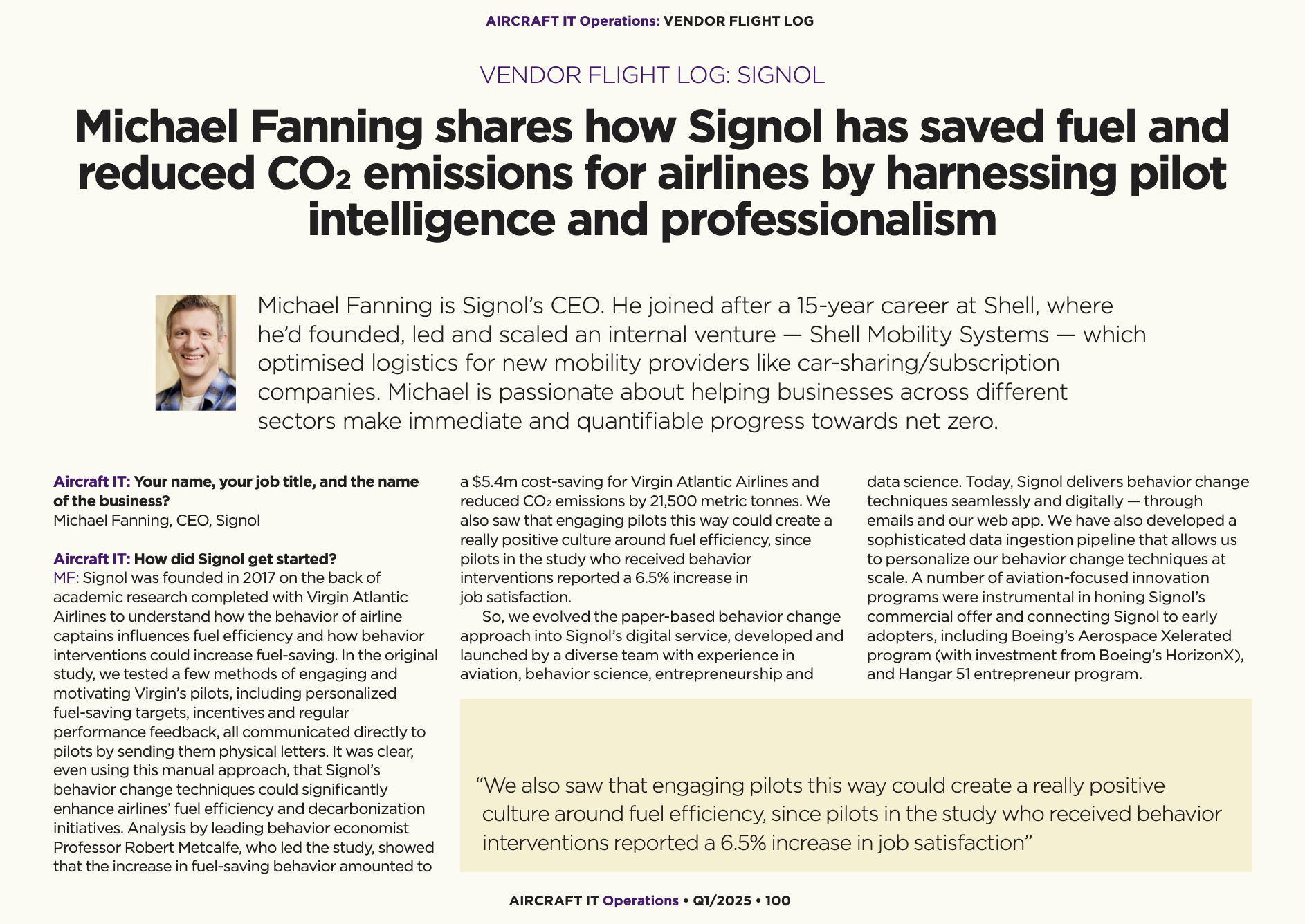There are many other complexities around behaviour change. Limited research exists on the long-term effects of behaviour change techniques, so Signol conducts its own cutting-edge research on this topic. We have found continuous improvements in fuel-saving behaviour even beyond three years. We also pay attention to the ethics of applying behaviour change techniques, and Signol has its own ethics checklist to ensure we are transparent about our behaviour change techniques within the service and that we respect airline pilots’ and seafarers’ authority and discretion at all times.
The key takeaway is that changing behaviour is not simple and often requires continuous research and testing, which is what our team of behavioural scientists, data scientists, and user experience researchers are responsible for.
As we conclude our series on the pivotal role of human behaviour in achieving net-zero goals within the shipping and aviation sectors, we’ve explored how subtle, well-designed behavioural interventions can significantly enhance operational efficiency. Our journey began by highlighting the often-overlooked impact of human actions on efficiency, delved into the factors influencing fuel-saving behaviours among pilots and seafarers, and examined strategies to encourage sustainable practices among highly trained professionals.
Next, our series will evolve to explore how user experience (UX) design and data analytics can turn these insights into action. Over the coming months, we’ll hear from Signol’s experts in UX design, research, and data science to uncover how technology and human-centered design can further empower shipping and aviation leaders and crew alike to meet their sustainability objectives. Stay tuned!




